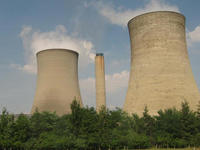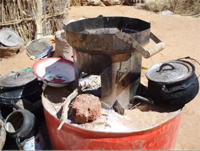-
Creating incentives to purchase disaster insurance
Natural disasters have become more common and more expensive – still, death, injury, and financial losses can be reduced through incentives to purchase insurance and install protective measures
-
-
Engineering lessons of Fukushima
Many engineers and scientists are still examining what happened at Fukushima during the earthqyake and tsunami of 11 March; one group, a Tsunami Loads-and-Effects Subcommittee sponsored by the American Society of Civil Engineers (ASCE), is preparing to publish early next year an approximately 350-page report
-
-
Doyenz, Lifeboat Distribution in distribution agreement
Lifeboat Distribution, a software distributor for disaster recovery, will distribute Doyenz’s cloud-based recovery services to thousands of its reseller partners across North America
-
-
Also noted
NY nuke owner awards $275,000 to first responders * Charlotte inks broadband network deal with Alcatel-Lucent * Japan offers free return flights to revive tourism after Fukishima disaster * FEMA: Insurance Key to Disaster Recovery, But May Not Be Enough * Video: Japan earthquake highlighted ‘lifeline role’ of banking services
-
-
U.K. nuclear plants are safe: report

The United Kingdom has finalized a review of the implications of the Fukushima disaster for the U.K. nuclear power industry; Dr. Mike Weightman, the author of the review, said that the “U.K. nuclear facilities have no fundamental safety weaknesses”
-
-
Tweeting may help in disasters
Social networks like Twitter cannot help prevent disasters, but can quickly correct misinformation resulting from false rumors, thus preventing possible further loss of lives
-
-
Alabama: students do not need birth certificates to attend school
After thousands of fearful Hispanic students failed to show up for classes on Monday in Alabama, the state’s top education official announced that children would still be allowed to attend even if they did not have birth certificates
-
-
"Burying" FEMA in DHS was "huge structural and operational mistake"
Homeland Security NewsWire’s executive editor Eugene K. Chow recently had the opportunity to interview Aden Hogan Jr., the city manager of Evans, Colorado and the former assistant city manager of Oklahoma City during the 1995 terrorist attack; in their interview, Hogan rates FEMA’s response during the recent spate of natural disasters in the United States, problems the agency has had since it became integrated in DHS, and steps that local governments and residents should be taking to better prepare themselves for major disasters
-
-
Graduate student develops emergency communication Twitter app
A graduate student at the University of Colorado has developed a smartphone app that makes it easier for first responders and emergency personnel to communicate via Twitter during disasters; without a standardized syntax, emergency personnel, affected individuals, information officers, and journalists were having trouble communicating on Twitter
-
-
Australia’s disasters cost insurers $25.6 billion
The series of disasters that struck Australia this year including the Queensland floods, Cyclone Yasi, and the New Zealand earthquake has hit local insurers particularly hard with a combined loss of $25.6 billion
-
-
Safe, efficient cookstoves for earthquake survivors

316,000 people were killed and more than one million made homeless by the 12 January 2010 magnitude 7.0 quake that left the capital city of Port-au-Prince in ruins; many of the displaced Haitians still live in tent cities, where even simple tasks such as cooking are a challenge; scientists hope to find the safest and most energy-efficient way for earthquake survivors to cook
-
-
Evaluating California earthquake forecasts
The Southern California Earthquake Center held a competition among seven different earthquake forecasts; an analysis of the competition shows that earthquake prediction remains an imperfect science, but the best forecasts are about ten times more accurate than a random prediction; the findings should help researchers both develop better earthquake forecasts and improve their tools for assessing those forecasts
-
-
Protecting structures against firebrand attack
NIST engineers have built a device that bellows showers of glowing embers, or firebrands, to test how structures can withstand this destructive aspects of wild fires; in Japan, where the device is now used in a test facility, firebrands are a growing peril that accounts for half of the nation’s ten most costly fires
-
-
Predicting race and ethnicity from irises now possible

Conventional wisdom holds that irises, like fingerprints, are unique to each individual and have little similarities between ethnic groups or gender, but a groundbreaking new study indicates that biometric scanners can actually predict race and gender based on iris texture alone; the study’s findings are important in that it opens new avenues for research that previously were not thought possible
-
-
U.S. intervention hinders disaster recovery, says reinsurance giant
Lloyd’s of London, the largest reinsurer of U.S. risk, said the federal government’s intervention in the insurance market could hinder recovery efforts following natural disasters; “We don’t believe that the U.S. has the balance between industry and government intervention right, you have government intervention in federal and state level, it demonstrates this is not a sustainable way to proceed,” said Lloyds general counsel
-
More headlines
The long view
The Surprising Reasons Floods and Other Disasters Are Deadlier at Night
It’s not just that it’s dark and people are asleep. Urban sprawl, confirmation bias, and other factors can play a role.
Why Flash Flood Warnings Will Continue to Go Unheeded
Experts say local education and community support are key to conveying risk.
